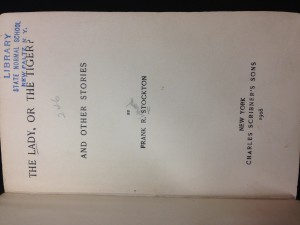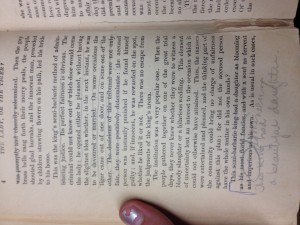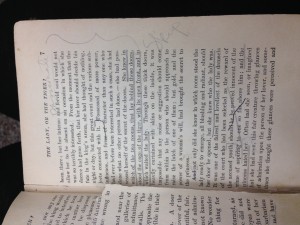Finding a book that has marginalia truly is a test to me. Trying to find the book isn’t impossible because there definitely are books that have marginalia. I went through many types of books on my search to find such old writing in the books. Even with the help of the people in the library I wasn’t lucky enough to find them. All I was able to find was very old but very interesting old books that were bound at the spine by leather. The books also had leather covers depending on the book. The books that i found with writing were most likely from the early 1920’s because they had Coppertone writing style.
The type of books I was searching out were books that had designs on the spine, leather bound, books falling apart at the spine and the books that looked like they had bridge formation on the spine which held the book together. I also checked books that seemed quite likely to be old like Shakespeare, old dictionaries, books on the middle ages, poetry and very old art books. The only writing I could find in the books from the 1800’s were not letters but symbols like brackets to point out certain facts in the book and I found check marks randomly written in the books. Even though I wasn’t lucky enough to find books that contained marginalia I still had a great time looking through american past time books and seeing how different the book quality they made the books as to now. I also learned that just because the book may look old on the outside doesn’t always mean that it will have writing inside of it. As they teach you in school, never judge a book by its cover. When I think about that quote I think to myself this couldn’t be truer.

























